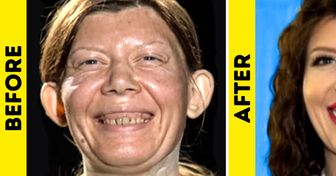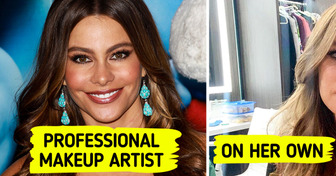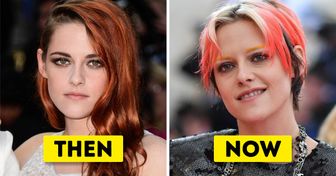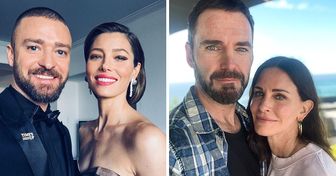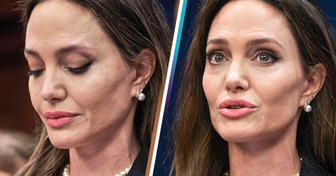10 Famous Women Whose Beauty Is Almost Perfect According to Science
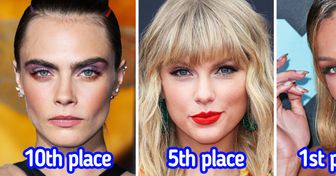
Marilyn Monroe, a name that conjures images of timeless beauty and an unmatched allure, has been likened to a fascinating blend of innocence and sensuality. These captivating qualities were first noticed by the perceptive photographer who discovered her, and they continue to intrigue and inspire admirers worldwide.
Often described as “half-child, half-woman,” Monroe’s enigmatic persona transcended the boundaries of her era, leaving an indelible mark on the world of fame. Her brilliance as an unparalleled luminary extended far beyond the silver screen, encompassing not only her remarkable acting talent but also her embodiment of beauty and style in their purest forms.
Monroe’s rise to stardom was more than just a journey; it was a transformative experience that shaped the way people perceived beauty and femininity. Her iconic platinum blonde hair, sultry red lips, and hourglass figure became symbols of glamour and sophistication. In an age when conformity often reigned supreme, Monroe fearlessly embraced her uniqueness, setting a new standard for self-expression and individuality.
Beneath the captivating surface of Marilyn Monroe’s iconic image lies a deeply compelling and often poignant personal narrative. Beyond the dazzling lights of fame and the adoration of millions, Monroe’s life was marked by a series of personal battles and enduring vulnerabilities. Her story serves as a stark reminder that, even in the midst of acclaim and admiration, the journey of life is often paved with intricate challenges.
Monroe’s meteoric rise to stardom in Hollywood is the stuff of legend. Her beauty, charisma, and talent catapulted her to heights few could have imagined. Yet, amid the glittering world of celebrity, she grappled with a profound sense of self-awareness and an underlying uncertainty that seemed to shadow her every step.
It’s in these moments of introspection and vulnerability that we glimpse the real Marilyn Monroe. The woman behind the dazzling smile and the glamorous façade was someone who, like all of us, carried the weight of her past experiences and personal struggles. Her candidness about these struggles endeared her to countless admirers who saw in her a reflection of their own complexities.
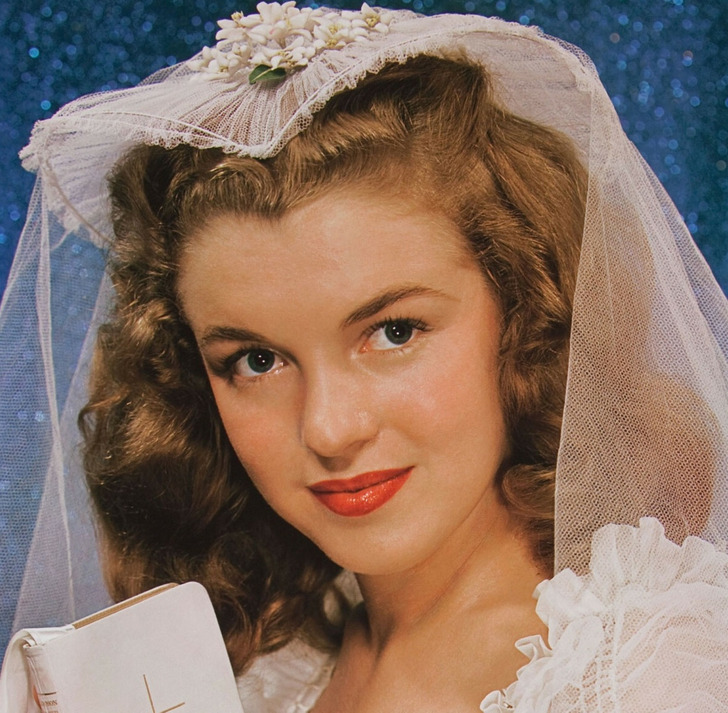
A photo of Marilyn Monroe with her natural hair
Marilyn Monroe’s iconic hairdo came at a significant cost, involving several transformative steps. Initially, she underwent hairline electrolysis to eliminate the widow’s peak on her forehead, a procedure designed to refine her look. Additionally, achieving her signature platinum blonde color necessitated bleaching her natural dark hair. However, these transformations didn’t unfold instantaneously.
Following the first treatment, Monroe’s hair sported a reddish-blond hue, not yet the distinctive shade she sought. Driven by her desire for lighter locks, subsequent styling sessions involved recurrent hair bleaching. Over time, this meticulous approach achieved the coveted platinum blonde look that has become emblematic of her image.
However, these series of procedures took a toll on her hair’s health, causing damage from the repetitive processes.
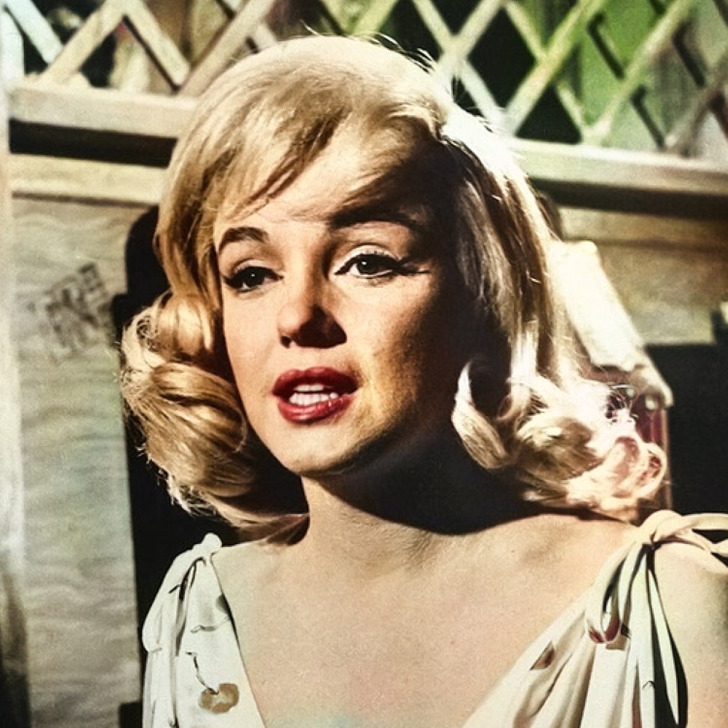
During that era, achieving Marilyn Monroe’s iconic platinum blonde color demanded rigorous processes involving high concentrations of sulfuric acid and hydrogen peroxide. This pursuit of her signature look came at a considerable price, scorching both her hair and scalp.
Remarkably, the actress endured bleaching sessions every 2-3 weeks, a testament to her commitment to maintaining her distinctive image. Moreover, Monroe went to extraordinary lengths to alter her hair’s natural texture. She resorted to using caustic soda, an ingredient akin to those found in drain cleaners, to straighten her naturally curly hair. This drastic technique also underscored the lengths she was willing to go to mold her look to perfection.
The repercussions of these intense processes eventually manifested as Monroe’s hair began to weaken and fall out. The toll on her once-lustrous locks prompted her to seek an alternative solution. The turning point came when she embraced wigs, a transition notably evident in her role for the 1961 film The Misfits.
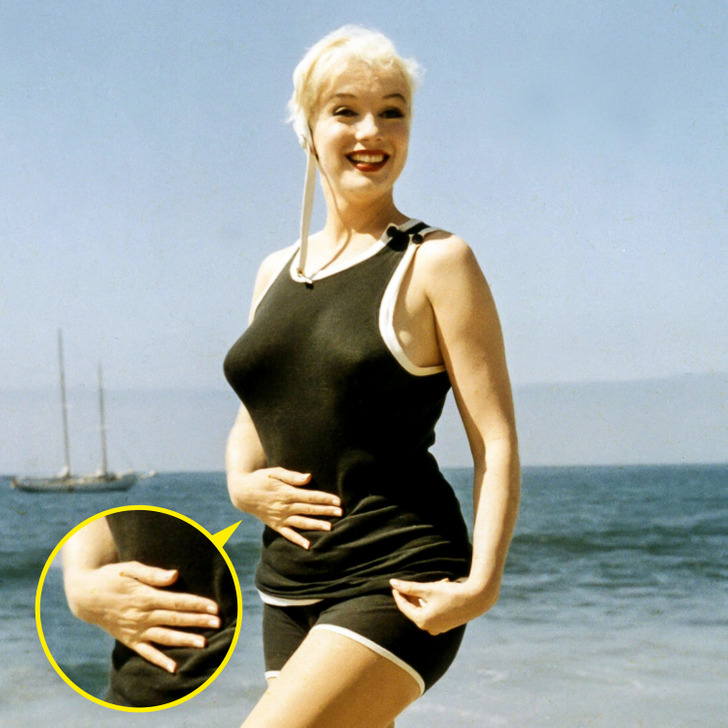
Beneath the captivating allure that defined Marilyn Monroe, there existed a layer of vulnerability that often went unnoticed by the public eye. Among her personal insecurities, one that troubled her was her perception of her own wrists, which she believed were wider than her ideal. Her concern about the width of her wrists reveals the intense pressure she faced to conform to the narrow standards of beauty prevalent during her era.
Amidst the art of posing for photographs, Monroe adeptly harnessed a subtle technique to address this concern. She adjusted her wrists to create an illusion that made her wrists appear slimmer, adding a graceful touch to her pose.
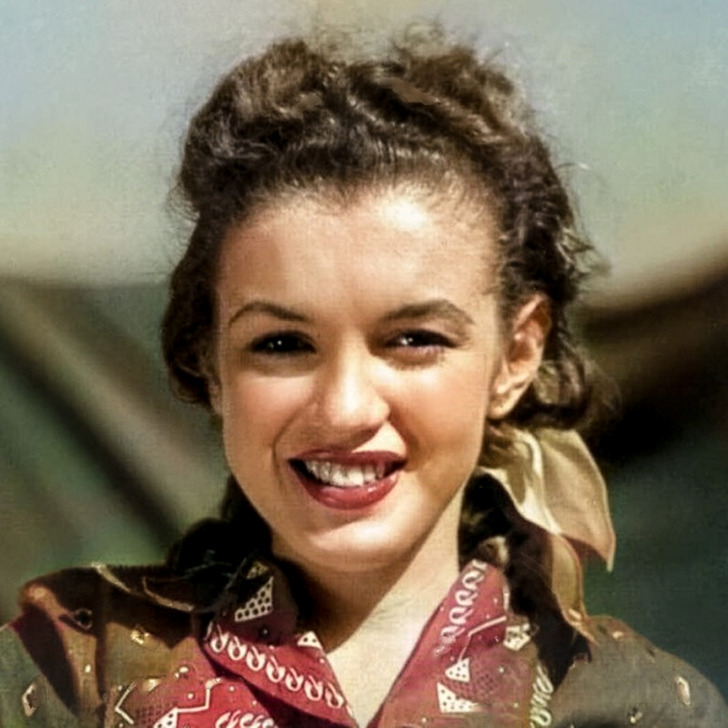
It’s truly captivating to take a closer look at Marilyn Monroe’s hairstyling preferences, which notably leaned away from intricate updos. This intriguing decision was rooted in her personal perception of having ears that she felt were slightly larger than she preferred. In response, she employed a shrewd approach by deliberately selecting hairstyles that artfully concealed this aspect, showcasing her knack for strategic grooming.
What makes this even more intriguing is how her signature hairstyle not only served as a canvas for her creative expression but also acted as a testament to her self-awareness. It’s as if she had an intuitive understanding of herself, using her hair to not only enhance her appearance but also to address her perceived imperfections.
This aspect of Marilyn Monroe’s style journey reveals a layer of her personality that’s often overlooked amidst her iconic status. It’s a reminder that even the most celebrated figures have their own concerns and methods of coping with them. In her case, her hair became a metaphorical veil, hiding her self-perceived flaw while simultaneously becoming a defining element of her timeless allure.
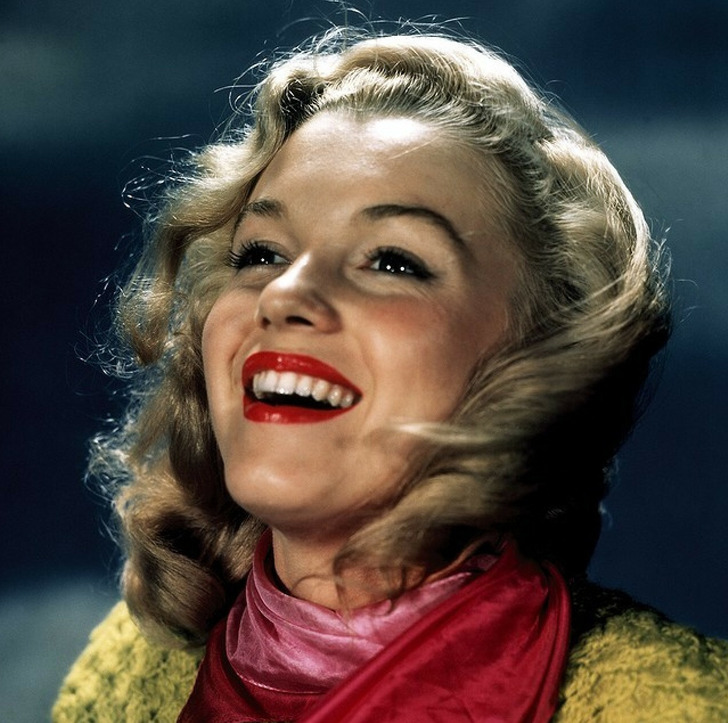
The actress was photographed in 1948
The story of Marilyn Monroe’s surgical journey around the years 1949 or 1950 is a topic that brings about a sense of worry and concern. As recounted by Patrick McGrady, an authoritative voice behind The Youth Doctors, it becomes evident that Monroe, despite her success as a $75-a-week contract actress, was facing the possibility of her career coming to an end. The alleged overheard comment at a party, labeling her a “chinless wonder,” highlights the deep-seated insecurities she may have faced throughout her life.
It is disheartening to think that even someone as iconic and talented as Marilyn Monroe could be affected by such negative remarks. This revelation sheds light on the pressures and expectations placed upon individuals in the entertainment industry, leading them to consider drastic measures like surgery to alter their appearance.
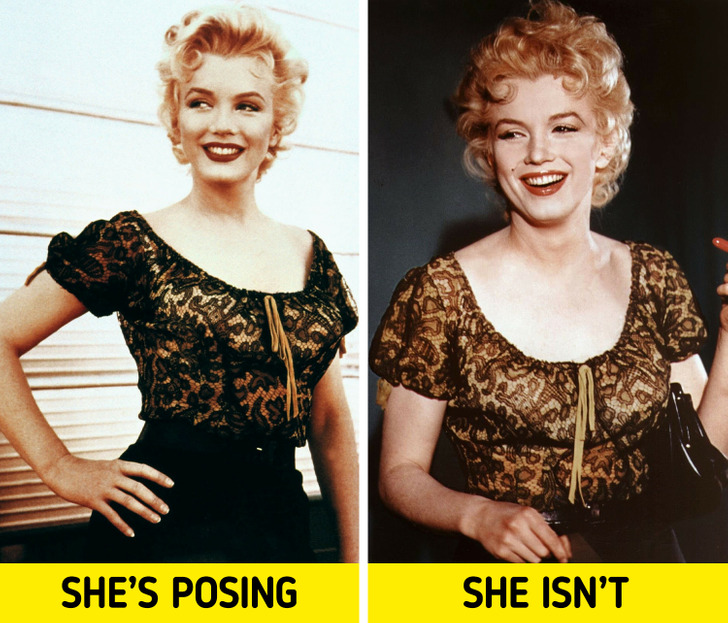
Seeking solutions, Monroe turned to John Pangman, a surgeon who frequently collaborated with the Gurdin. McGrady’s insights paint a vivid picture: Pangman’s diagnosis pinpointed a subtle flat chin and performed to a surgical procedure involving a cartilage graft. During the recovery time, Monroe deferred a screen test by saying that her absence is due to a chin-related accident.
However, it is essential to explore further the impact of Monroe’s poses in front of the camera on her overall visual presence. These poses weren’t just random; they were a purposeful part of her artistry. They played a crucial role in shaping how the public and the media perceived her (you can see examples in the photos above).
As noted by Gurdin, the gradual fading of the cartilage augmentation became a significant change, especially noticeable during the 1962 film Something’s Got to Give (see the photo above). This shift marked a crucial period, emphasizing the clearer appearance of Marilyn Monroe’s facial lines.
Interestingly, this transformation revealed a genuine aspect of Monroe’s natural expression, particularly when she laughed and a slight double chin emerged. In some photos, Monroe’s poses highlighted her natural grace and elegance, underlining her status as an enduring beauty icon, while in others, her playful and carefree spirit radiated, making her relatable and down-to-earth despite her immense fame.
Monroe’s early life was marked by a struggle with stuttering, which reemerged during her high school years and persisted for a span of two challenging years. The advice given by the speech therapist was transformative. She encouraged Monroe to adopt a breathy tone of voice, a technique that aimed to alleviate her stutter and enable her to speak more fluently.
Little did Monroe know that this guidance from her speech therapist would not only change her life but also leave an indelible mark on the world of entertainment. The breathy, sultry voice that she cultivated during these formative years would become an integral part of her iconic identity as an actress and a symbol of sensuality.
However, despite her triumph over stuttering, Monroe encountered personal challenges during the filming of her unfinished project, Something’s Got to Give (as seen in the photo above). This project was fraught with difficulties, and her stutter resurfaced, making it increasingly challenging for her to deliver her lines effectively. Eventually, the production took the difficult decision to let her go from the film.
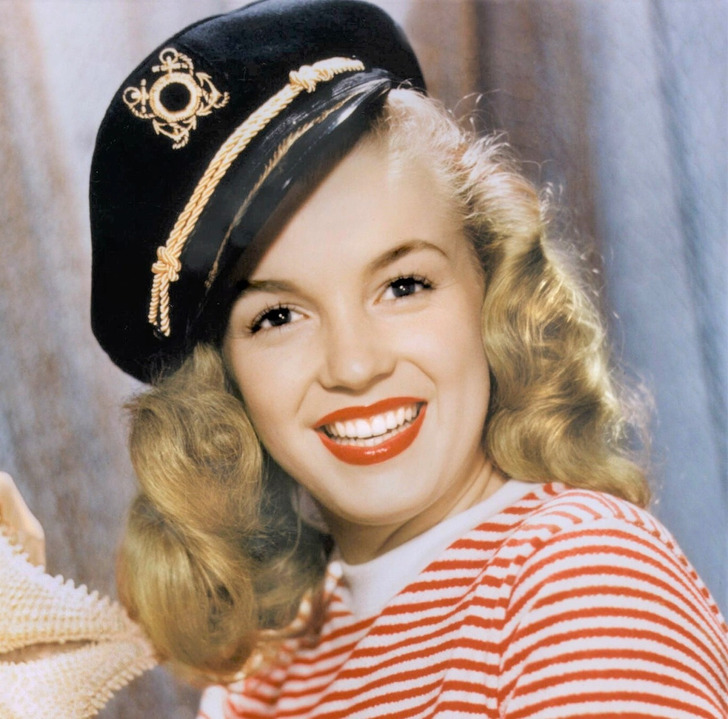
The actress with blue and brown eyes
In the 1940s, Hollywood saw a game-changing trend emerge with the introduction of colored contact lenses. These lenses allowed famous actors like Marilyn Monroe (and some others, like Ronald Reagan) to change the color of their eyes. This not only transformed their on-screen appearances but also gave them the freedom to perform without glasses, captivating audiences worldwide.
A research dove into Marilyn Monroe’s story; her ever-changing eye color in photos and films has intrigued many. Some suggest she may have had vision issues, possibly being nearsighted. To maintain her captivating on-screen presence, Monroe likely used contact lenses to correct her vision. She might have even used adrenaline eye drops to manage occasional eye irritation, showing her dedication to her iconic image.
Speaking of which, during the production of How to Marry a Millionaire, Marilyn Monroe played a character named Pola Debevoise who wears glasses that she wore in real life.
Marilyn Monroe’s physique captured admiration, prompting her dedicated efforts to maintain its appealing form. At the same time, her embrace of full-figured curves became a symbol of her unique allure. Unlike conventional expectations, Monroe’s abdominal area displayed a gentle round, celebrating her natural body.
In a revealing 1952 interview, Monroe’s candid perspective emerged as she shared her down-to-earth viewpoint. She humbly acknowledged that she saw her body without the trappings of celebrity status. Shortly after her films gained popularity, she adopted a fitness routine, incorporating focused exercises into her daily schedule.
With each sunrise, Monroe committed herself to a dedicated fitness regimen, which included lightweight dumbbell exercises and targeted muscle workouts. This proactive approach towards her physical well-being highlighted her dedication to health.
During an interview, Marilyn Monroe candidly revealed her eating habits. She mentioned a tendency to consume minimal food during the daytime but allowed herself to eat a steak for dinner.
In the context of weight, she is historically documented at 120 pounds in correspondence with her height of 5 feet and 5 ½ inches. Notably, Monroe’s willingness to disclose her weight fluctuation underscores her honesty about her body’s changes. In 1959, she openly admitted that her weight had increased to around 127 pounds.
Interestingly, anecdotes from those who knew her suggest that her weight may have reached around 140 pounds toward the end of her life, underscoring the natural changes that everyone’s body experiences over time.
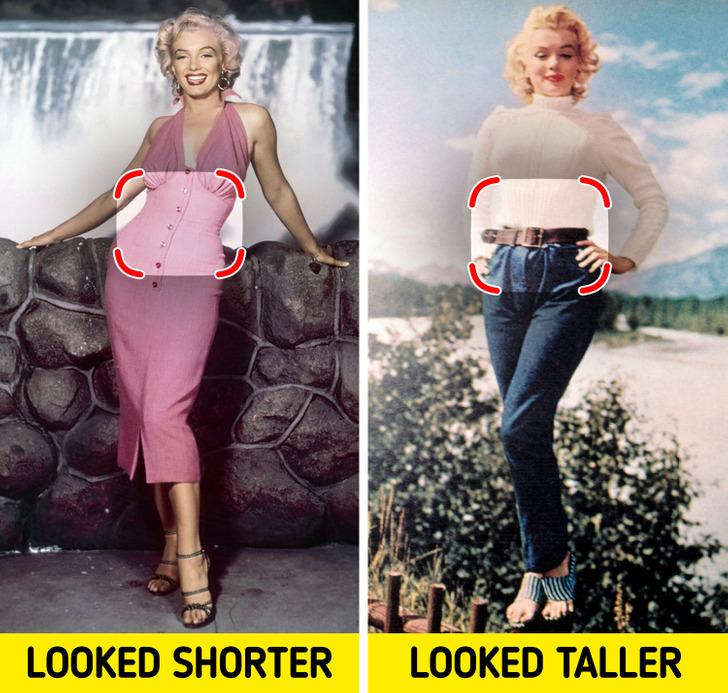
Marilyn Monroe had a unique physical appearance that didn’t quite fit the beauty standards of her time. Her body proportions were different, with a bigger head, shorter legs, and a long torso, which made her look shorter than she actually was.
But Monroe knew how to make the best of her unique figure. She had a great sense of style, and she used it to her advantage. She made clever fashion choices that created a sense of balance in her appearance. One of her tricks was wearing wide belts that cinched her waist. This made her curves stand out and gave the illusion of longer legs, making her seem taller than she really was.
Using fashion to create illusions was just one of Monroe’s strategies. Her clothing always fit her well, and she chose accessories that highlighted her best features. By using fashion in this way, she was able to overcome the challenges posed by her unconventional proportions.
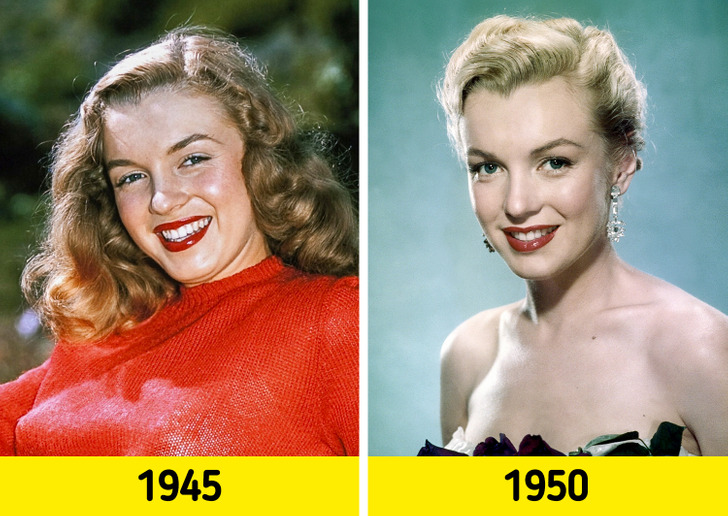
In the early days of Marilyn Monroe’s modeling career in 1945, a pivotal moment of guidance reshaped her approach to smiling. Remarkably, she encountered feedback that her smile was not in line with industry expectations. The modeling agency, in an endeavor to refine her appearance, pointed out that her smile, while exuberant, is too high.
This particular manner of smiling led to the formation of pronounced lines around her nose, which inadvertently gave the illusion of elongating her nose. Recognizing the importance of this constructive advice, Monroe embarked on a journey to adapt her smile, effecting a transformative change in her visual presence.
Under the agency’s mentorship, Monroe meticulously learned how to adjust her smile, delicately lowering its position. This transformation wasn’t merely cosmetic; it became emblematic of her evolving screen persona, giving rise to the hallmark lip quiver that is now famously associated with her and has become an integral part of her mesmerizing on-screen allure.
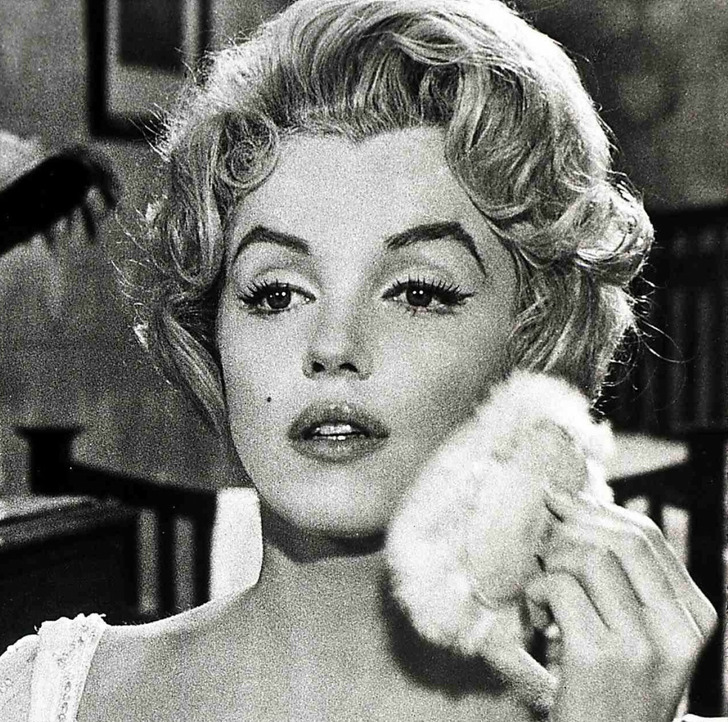
One of her notable concerns revolved around her perceived too-big nose, which led her to contemplate altering its appearance. Over time, astute observers noticed a subtle shift in her nasal structure, prompting speculation among plastic surgeons and experts that she may have undergone a rhinoplasty procedure.
Even after making adjustments to her nose, Monroe remained unsatisfied with its appearance. Her pursuit of perfection drove her to explore additional ways to address this concern. To create the illusion of a narrower nose, she incorporated contouring techniques into her beauty routine. This choice reflects Monroe’s dedication to crafting her image and the meticulous measures she took to achieve the look she desired.
Monroe’s use of contouring was not unique to her; it’s a makeup technique employed by many to sculpt and define facial features. In her case, she likely applied makeup strategically to create shadows and highlights that would give her nose the appearance of greater symmetry and slenderness. This process involved skill and artistry, showcasing her commitment to her public image.
As the years have passed, the enchanting presence of Marilyn Monroe continues to exert its magnetic pull on audiences, reaffirming her well-deserved status as an enduring icon of her era. Her lasting appeal is a result of a multifaceted tapestry of elements that collectively have elevated her to the pinnacle of cultural legend.
Marilyn Monroe’s enduring charm remains as captivating today as it was during her heyday. One of the defining features of her allure was her iconic beauty mark, a small but significant detail that added to her mystique. Yet, her appeal transcended this singular physical trait, encompassing her embodiment of the quintessential Hollywood glamour of her time. Her appearance was nothing short of captivating: her lustrous, golden blonde hair seemed to cascade like liquid sunshine, her hourglass figure stood as an enduring symbol of feminine grace, and her smile possessed the luminous power to illuminate the world around her.
While her stunning beauty was captivating, what truly made her special was her ability to connect with audiences on an emotional level.
Monroe’s talent for comedy, in particular, showcased her exceptional skill in forging emotional bonds. Her comedic performances were not just funny; they carried a heartfelt touch that left viewers both laughing and feeling deeply connected to the characters she portrayed. Whether she played the endearing but somewhat scatterbrained Lorelei Lee in Gentlemen Prefer Blondes or the lovably charming Sugar Kane in Some Like It Hot, Monroe effortlessly infused her roles with a mix of vulnerability and sensuality that resonated with audiences.
However, it wasn’t limited to comedy. Even in dramatic roles, Monroe’s performances had a genuine and relatable quality. Whether she portrayed the troubled singer Chérie in Bus Stop or took on a dramatic role alongside Clark Gable in The Misfits, she had a knack for delving into complex characters, evoking empathy and understanding from her audience.
Marilyn Monroe’s enduring influence on popular culture is nothing short of remarkable. Her impact transcends the boundaries of the silver screen, reaching into art, fashion, and everyday life. Her image, immortalized through a countless photographs and paintings, continues to captivate and inspire admirers around the globe, solidifying her status as an eternal cultural icon.
One of the most iconic images in the history of cinema is the moment when Marilyn stood above a subway grate, her white dress billowing around her, in the classic film The Seven Year Itch. This cinematic moment left an indelible mark on the fashion world. The image of Monroe in that iconic white dress has become an enduring symbol of sensuality and sophistication. It’s a testament to her ability to shape and redefine cultural norms, even through something as seemingly simple as a dress.
The influence of Marilyn Monroe goes beyond the silver screen and fashion, seeping into everyday life. Her image has been emblazoned on countless pieces of merchandise, from posters and coffee mugs to t-shirts and collectibles. Her name and likeness continue to grace everything from fragrances to furniture, a testament to her timeless appeal and marketability.
Monroe’s profound impact on the art world cannot be overstated. Artists from every corner of the globe have drawn inspiration from her timeless beauty and enigmatic allure. Notably, Andy Warhol’s Marylin Monroe Series stands as a testament to the enduring fascination she elicits in artists and art lovers alike.
Monroe has not only inspired visual art but has also been a muse in the music world. This is exemplified by the famous song Candle in the Wind, originally written by Elton John as a heartfelt tribute to her. Her influence has resonated across various artistic mediums, leaving an indelible mark on the cultural landscape that continues to captivate and inspire generations.
Marilyn Monroe’s insecurities remind us that even the most iconic celebrities have their moments of self-doubt. This phenomenon isn’t confined to the past; it resonates with today’s stars, including the immensely talented Beyoncé.
Surprisingly, Beyoncé, known for her powerful stage presence, has openly shared her experiences with performance-related anxieties. Despite her incredible talent and polished performances, she has admitted to dealing with common human challenges while on stage, such as a runny nose and perspiration. This candid revelation serves to humanize her in the eyes of her fans, making her relatable despite her superstar status.
Beyoncé’s candor extends beyond her performance anxieties to her thoughts about her own physical appearance. She has expressed a desire to change certain aspects of her body, revealing vulnerabilities that many can relate to. For instance, she’s mentioned the fatigue her feet experience due to her electrifying performances. This highlights that even the most captivating shows come at a cost. Additionally, her acknowledgment of her “big” ears has led her to choose large earrings, showcasing her endearing efforts to enhance her confidence and image.
In essence, the insecurities faced by iconic celebrities like Marilyn Monroe and Beyoncé serve as a testament to the universal nature of self-doubt. Regardless of one’s fame or success, self-esteem and body image concerns are part of the human experience. These celebrities remind us that they, too, are human beings navigating the complexities of self-esteem in a world that often places immense pressure on physical appearance and performance.
Beyoncé’s willingness to share her insecurities makes her even more relatable to her fans. It’s a reminder that, despite her superstar status, she grapples with everyday challenges just like anyone else. Her openness about her runny nose, perspiration, and body image struggles reinforces the idea that celebrities are not immune to the same insecurities that many of us face.
Other than Beyoncé, Jennifer Aniston faced an uphill battle in her early years, grappling with undiagnosed dyslexia that persisted throughout her first two decades of life. During this time, she often felt as though she didn’t measure up to her peers, which was a challenging and disheartening experience.
It wasn’t until Aniston reached her 20s that she finally received a diagnosis of dyslexia. This revelation shed light on the difficulties and traumas she had experienced during her childhood, providing her with a profound sense of relief. Understanding the root of her challenges was a pivotal moment in her life.
Over the years, Jennifer Aniston has learned to effectively manage her dyslexia, a journey that has been intertwined with her personal growth. “I always thought, if you’re angry you just don’t say anything,” said Aniston. "I would come out passive, things would come out passively. But it doesn’t have to be black or white. You don’t have to be a hysterical human being and have veins popping out of your neck and turn bright red and terrify people — or else keep quiet and put your head in the sand.
“I used to loathe confrontation. Loathe it. I understood anger, but I didn’t know that you should express it. Which has been something that I’ve really tried to work on.”
In the colorful tapestry that encapsulates Marilyn Monroe’s life, her insecurities serve as poignant reminders that even within the dazzling spotlight of fame, the enduring journey toward embracing one’s true self and seeking acceptance remains a fundamental and universally relatable aspect of the human condition.
Despite her iconic status and radiant exterior, Monroe’s struggles with self-doubt and the pursuit of authenticity underscore the complex interplay between external perceptions and internal battles that shape our existence.

